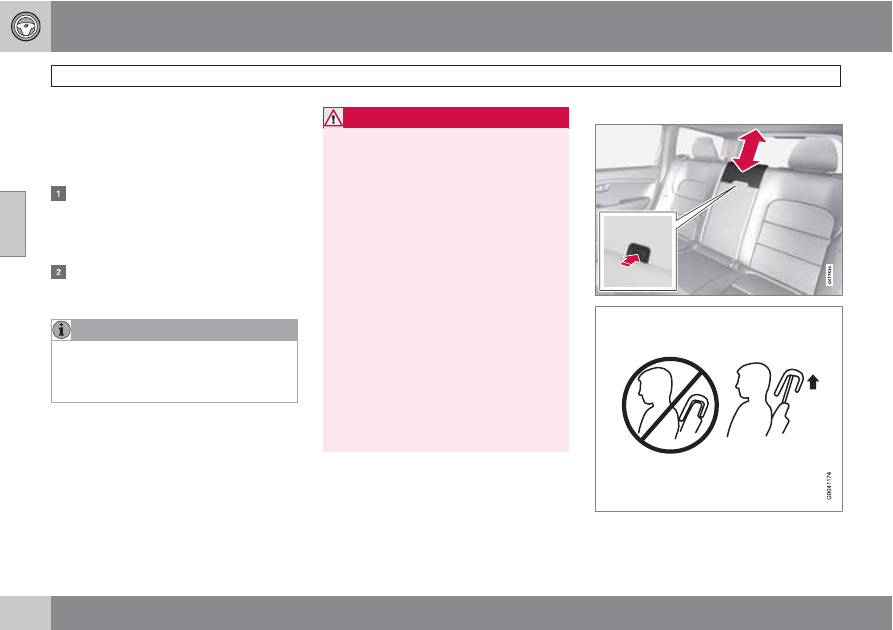Volvo V70X, C70 (2010 year). Instruction - part 5

03 Your driving environment
Seats
03
82
•
The right (passenger's side) section can be
folded down together with the center sec-
tion.
•
All three sections can be folded down
together.
Release and lower the center head
restraint (see page 82) if the center and/
or right section of the backrest is to be
lowered. The outboard head restraints fold
down automatically.
Pull up the backrest release control on the
respective section(s) and fold the sec-
tion(s) down.
NOTE
It may be necessary to move the front seats
forward or put their backrests in a more
upright position before folding down the
rear seat backrests.
WARNING
•
When the backrest(s) are returned to the
upright position, check that it is properly
locked in place. The red indicators
should not be visible.
•
Return the outboard head restraints to
the upright position.
•
Long loads should always be securely
anchored to help avoid injury in the
event of a sudden stop.
•
Always turn the engine off and apply the
parking brake when loading/unloading
the vehicle.
•
Place the transmission in the Park (P)
position to help prevent inadvertent
movement of the gear selector.
•
On hot days, the temperature in the
vehicle interior can rise very quickly.
Exposure of people to these high tem-
peratures for even a short period of time
can cause heat-related injury or death.
Small children are particularly at risk.
Rear center head restraint
The center head restraint should be adjusted
according to the passenger's height. The